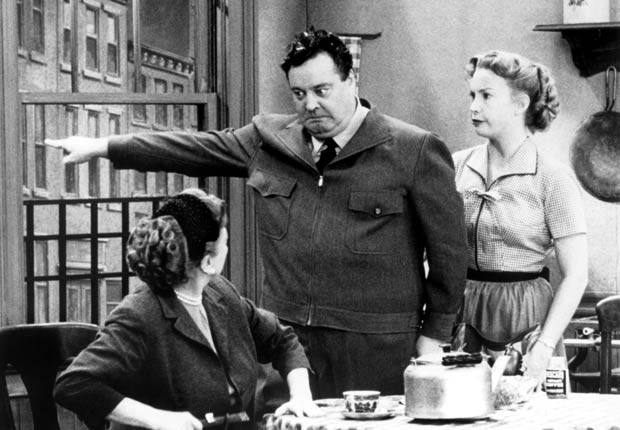How to Solve Co-founder Conflicts
Summary Insight:
Business partnerships make or break momentum. This article shows you how to diagnose partner conflict and fix what’s fixable—or walk away if it’s not.
Key Takeaways:
- Three types of destructive conflict: vision/values, interests, and styles.
- Vision and values misalignment means it’s time to split.
- Style and interest conflicts can be transformed with trust, structure, and accountability.
Being business partners is a lot like being married. When the relationship is thriving, it’s awesome. But when it isn’t, it really sucks. In fact, few things can destroy organizational momentum like two co-founders in a bad relationship. I have a friend in a successful business partnership who puts it like this, “I have two wives. One at home and one at work. I’ve got to invest time and energy to make sure that both stay happy, otherwise, it all goes to s#*&t!”
Not all partner conflict is bad. You actually want constructive conflict in your partnership. Constructive conflict means that you and your partner share the same vision and values; there’s give-and-take; you fiercely debate potential decisions but without attacking each other’s character; there’s a sense of mutual trust and respect; and your individual strengths and styles complement each other. You are both better because of the other.
Destructive conflict, on the other hand, is like a toxic marriage. It eats away at the system from the inside and doesn’t work for anybody. Just as divorcing adults impacts their kids, two co-founders in a toxic relationship impact everyone else in the organization.
If you’re navigating a bad business partnership, or you just want to make sure that your current great partnership remains so, then it can be eye-opening to understand that any destructive partnership conflict falls into just three types. Once you know what type of conflict you’re dealing with, then you can know how to address it.
As you read about each category of destructive conflict below, see if you can recognize where your partnership is experiencing the most strain today. That will tell you where to focus your energy and attention to help the partnership be great again, if that’s possible, or to walk away if it isn’t.
Category 1: Conflict of Vision and Values
I’m just going to come right out and say it. If you are having a true conflict of vision and values between you and your business partner, you only have one option: get a divorce. In this case a “divorce” means that one partner needs to effectively buy the other out or, if not, to shut the business down and go your separate ways.
Why? Because nothing is more destructive to organizational momentum and potential than a conflict of vision and values. Vision is the destination or ultimate outcome you want the business to reach. Values are expressed in the behavior you deem desirable and acceptable during the journey. If the co-founders no longer want to end up in the same location or don’t abide by the same core values, how can they possibly work effectively together? They simply can’t.
As an example, imagine a married couple in counseling. One partner desires to live in Manhattan and spend their days shopping on 5th Avenue while sleeping around with other people. The other wants to live off the grid in an organic commune and work the land in meditation and celibacy. Is there anything that a marriage counselor can do to help the couple? No! They have different life visions and values. No amount of counseling or therapy is going to change that fact. It’s time to split the marriage and allow each person the freedom and autonomy to follow their own path.
The same is true in your business. What’s your vision? Does it align with your partners? Do you want to grow big but he or she wants to stay small? Do you both have the same set of core values? Do you authentically trust and respect one another? If you can’t agree on where you want to end up, or how you’re going to behave on the journey, then it doesn’t make any sense to try to travel together. But if you do, then all other conflicts are negotiable.
Thankfully, the remaining two types of conflict aren’t nearly as destructive and severe as a conflict of vision and values. In fact, they can be harnessed to form more constructive partnerships and to create a better, stronger, and more dynamic relationships.
Category #2: Conflict of Interests
A conflict of interests means that what’s good for one partner is not seen as necessarily good for the other. For instance, perhaps you feel your position is worth more in salary and equity than your partner’s but you know that broaching the subject will create hard feelings. It’s good for you, not so good for your partner. Or maybe you feel like your partner can no longer carry his or her own weight — in other words, the needs of the business have outgrown their capabilities. Continuing to work together seems good for them but not so good for you. How do you navigate a conflict like this?
In Michael Eisner’s thoughtful book about partnerships, Working Together: Why Great Partnerships Succeed, he tells a story about how to navigate a conflict of interest. It requires shared vision and values and a willingness for both partners to give and take.
Eisner begins the book with a story of how he met Frank Wells, a former Warner Brothers executive and free-spirited thrill-seeker, who once checked out of Hollywood for a few years to climb the tallest peaks in six different continents.
At the time, both Eisner and Wells were being courted by Disney to be Co-CEOs – a classic conflict of interest if ever there was one. But rather than duking it out in a battle of wills and egos, Wells realized that Eisner was the better Chairman and CEO for Disney and he, in turn, could thrive in the President and COO role, supporting Eisner, filling in the blanks, and helping the team reach its potential.
Their partnership thrived for a decade before Wells died in a tragic helicopter crash and, by that time, they had transformed Disney into a multimedia empire. This only happened because Frank Wells was able to put his own ego aside, trusting that if he supported Eisner to flourish in the CEO role, it would come back to him in spades. Eisner describes other instances of give and take from both partners in the book and wrote, “We learned that one plus one adds up to a lot more than two.”
Of course in order to put your own interests temporarily aside in the interests of your partner, you need to have absolute trust in your partner. If there isn’t mutual trust, then there’s no way to navigate a conflict of interests. So a key question is this, “do you trust your partner and does he or she trust you?” If so, and if you share the same vision and values, then you can find creative ways to navigate a conflict of interests. If not, and if trust can’t be restored, it’s a clear indicator that it’s time to get a business divorce.
Category #3: Conflict of Styles
The last major category of partner conflict is a conflict of styles. This conflict occurs when the style of one partner rubs the other the wrong way. Think of it like this — in order to have a good relationship, it’s not enough to trust your partner, you also have to like and respect your partner and they also have to like and respect you.
For instance, if one partner is highly creative and all over the map with their ideas but the other is very focused and methodical, can each one appreciate and respect the gifts of the other? If so, then that’s the sign of a strong partnership. If not, if there’s condemnation and scorn between the partners on their respective styles, then that’s a sign of a bad partnership.
There’s no one right style. A highly effective partnership requires complementary styles, where one partner is naturally stronger where the other is weaker. For example, I once had a partnership with a person who was a lot like me. At first I really enjoyed it. We moved at the same pace, saw things the same way, could do the same things very well, etc. But after a time, the similarities between us became more of a curse than a blessing. We’d fight for control of the vision; we both lacked attention to detail and process; we’d each struggle to do the things we weren’t very good at but that the business needed to get done. It became a real grind and the partnership failed.
After that experience, I began to really appreciate talented people who had a different style than mine – styles that complemented my strengths and interest versus replicating them. In my book Organizational Physics I make the recognition and appreciation of different styles really easy through a simple pattern language called PSIU. If you’d like to better understand your partner’s style, its strengths and stressors, gifts and blind spots, and how to manage your relationship better, you may want to start with the World’s Fastest Personality test here.
The Three A’s: Or, How to Energize Any Partnership
What I find most interesting about the three sources of destructive conflict is that a conflict of interest and styles (assuming there’s alignment of vision and values) ultimately leads to better, more creative decisions. Basically, you don’t want a partner who agrees with you on everything and lets your ego run rampant while you fall prey to your own blind spots. You want a partner who challenges you, who is strong where you are weak, and who helps you to see the complete picture. Then, when you join minds together to solve problems, you come up with better solutions.
In my coaching practice, I’ve found that there are three things every partnership can do to re-energize itself. These three things are simple to do but take concerted energy and effort to practice. However, if you put them into play, you’ll find that your partnership will improve, often dramatically.
Acceptance
People are who they are. The #1 thing you can do to improve your partnership (really, your relationship with anyone) is to accept the person for who they are. That is, quit wishing for them to be different. Nothing is going to change who they are unless and until they want to change themselves.
Is your partner a selfish, myopic, primadonna? Well, congratulations! If you are committed to be in that partnership then you get to practice patience, sacrifice, and compassion. Accept it. You’ll save yourself a lot of time and energy when compared to wishing things were different.
One thing I’ve noticed time and again in my own life and relationships is that if I stop wanting someone to be different than they are and I give them the respect and autonomy to be themselves, they magically seem to change into a new person. If I’m subtly or overtly holding an energy pattern of “You suck. You should be different than you are,” then they seem to exacerbate those negative behaviors that are driving me crazy in the first place.
Acceptance is a subtle, challenging thing. It’s also the surest route to happiness in your life and work and to thriving relationships. Accept others for who and how they are, not how you feel they should be.
Appreciation
Appreciation is the twin of acceptance. What you accept “as is” is what you can appreciate. What do you sincerely appreciate about your partner? Don’t underestimate the power of sincere expressions of gratitude and appreciation for yourself and others. We all want to feel accepted and acknowledged, and that we’re adding value to the lives of others. Take some time right now to think of the things you really appreciate about your partner and go and tell him or her.
I have a friend who is really in despair right now. For the past several months he’s been volunteering for a non-profit with a dwindling following. At first he was really excited to help them because their cause really resonated with his passion for social justice and his creativity. He was so enthralled with their potential that he volunteered all his free time for weeks rebuilding their brand architecture, web site, and social media presence, all at no cost. I saw his work and results and they are awesome.
I just got off the phone with him and I’m sad to say that, rather than being elated about a job well done, he feels devastated about what seems like a huge let-down. Why? Not one member of their board reached out to say, “Thank you. I appreciate how awesome this looks, the effort that must have gone into it, and what a great job you did.” No wonder that non-profit is struggling!
This little anecdote made me realize how many working relationships and partnerships must be on the rocks because no one took the time to sincerely appreciate someone. Man, what wasted potential and opportunity – and all for want of a little acknowledgement and appreciation! Appreciation is a currency that you must spend for it to do any good. Go and spend some now.
Accountability
The last “A” that can turn a struggling partnership around is accountability. Often there’s partnership conflict because both partners are “in each other’s business,” and not in a good way. When it’s unclear who’s accountable for what business functions and decisions, this leads to confusion and wasted time and effort.
A thriving partnership is a combination of radical transparency and unarguable accountability. Radical transparency means that there are no secrets. There’s a free flow of information across business functions. Unarguable accountability means that one role is authorized to say “yes” and “no” to a decision in each business function.
For instance, if your strength is in marketing and sales and your partner’s strength is in technology and product, then you both need to understand what’s happening in all areas. But when it comes time to make a decision in sales or marketing, you take it. And when it comes to a decision in technology or product, your partner takes it. Do you and your partner (and others) influence those decisions? Absolutely. But the success or failure of the implementation falls to the person with accountability in that function.
In a growing organization, roles change all the time. In my coaching practice with expansion-stage companies around the world, what transforms a once-thriving partnership that has been struggling is the creation of a new structure with unarguable role accountability.
Prior to the new structure, both partners are struggling with questions like, “What is my accountability and what is my partner’s? When do I involve others in a decision and when do I just take action and get it done? How should the performance of different functions be measured? And generally, how do we get out of this cycle of second-guessing one another?”
Once the new structure is created and the partners have mutually accepted their own roles and accountabilities in that structure, all those nagging questions go away. There’s radical transparency fused with unarguable accountability where both partners, and the surrounding team, play to their respective strengths and passions. As my daughter’s preschool class used to say, “good boundaries make good buddies.”
Summary
In summary, constructive conflict is highly desirable. After all, “if both of us agree, one of us is useless.” Highly effective partnerships invest in developing and maintaining the partnership. If not, that formerly constructive conflict will turn destructive. You can avoid a turn for the worse in your partnerships by remembering these three things:
- The most destructive type of conflict occurs when there is no longer shared vision and values. If that’s the case, you can only divorce.
- The next, more manageable type of conflict is a conflict of interest. You can successfully navigate a conflict of interest by tapping into the bigger shared vision and values, and with give-and-take and mutual trust between parties.
- The last, and generally the easiest type of conflict to navigate, is a conflict of styles. You can shift this conflict by practicing acceptance and appreciation and by creating unarguable role clarity, where each partner plays to his or her respective strengths and passions in their area of expertise.
Thanks for reading. I hope you find this to be a helpful way to think about your partnerships and how to improve them.




